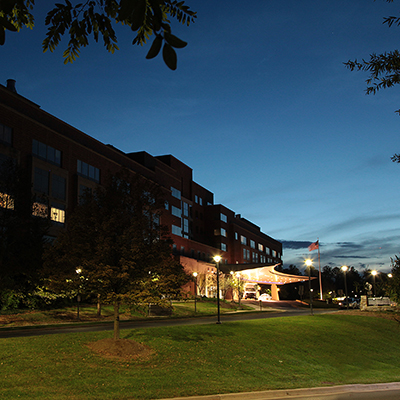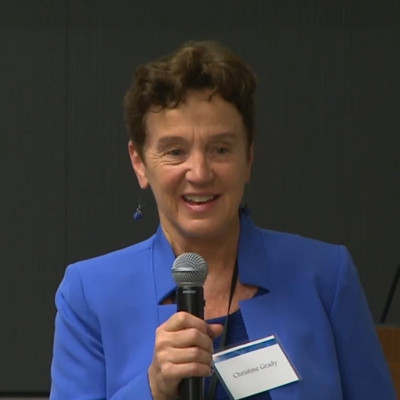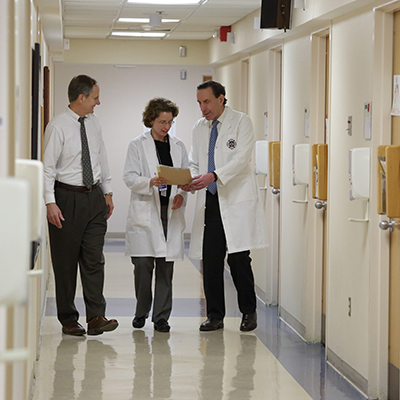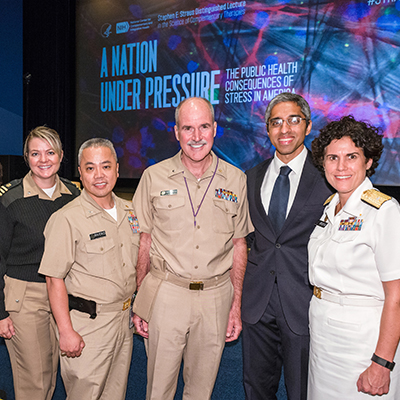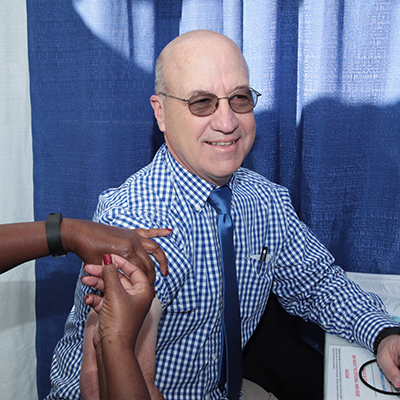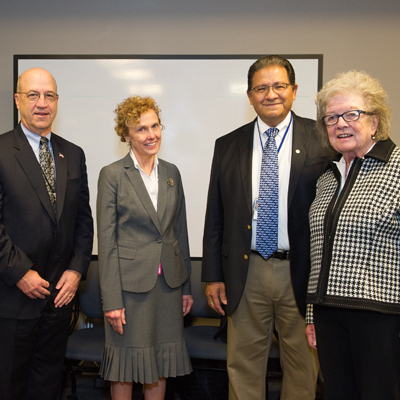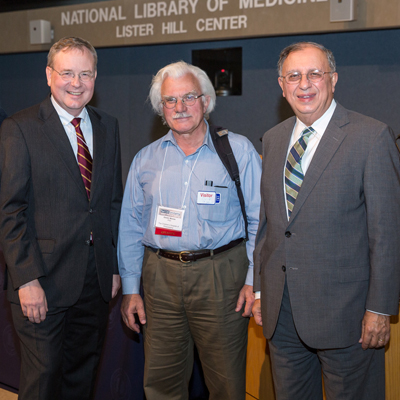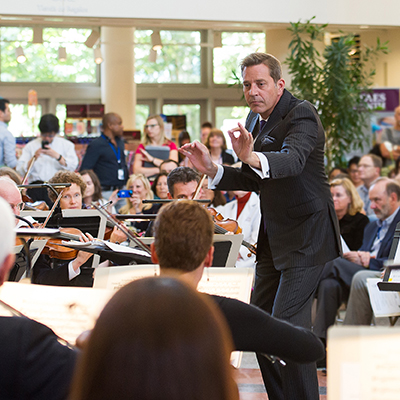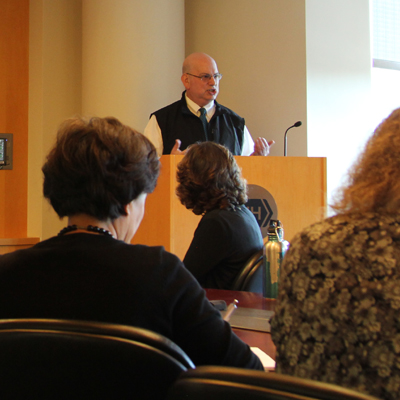From dusk to dawn: a tribute to employees who maintain hospital operations 24/7

As the sun sets, the hustle and bustle of thousands of NIH employees working in the NIH Clinical Center may appear to dwindle. But in fact a critical next shift of care providers and administrators step up to serve overnight, in the wee hours of the morning, and on weekends and holidays, charged with, and committed to, ensuring CC patients continue to receive safe, high quality care.
As a tribute to the dedicated staff who ensure there are no "off hours", CC News has provided its cameras to several departments to document their important behind-the-scenes work. On page 4, and online, readers can view photos from the Department of Transfusion Medicine, Nursing Department, Nutrition Department and others.
If a question or issue comes up after the traditional business day, typically a key point of contact is the nursing administrative coordinator. These nurses make rounds on patient units, pharmacy, interventional radiology, work with physicians and report critical lab values. While the nursing administrative coordinators are on the move, the Admissions Department serves as a more permanently placed resource for patients and staff alike as it is open 24/7. There is also always a designated senior hospital administrator on call. The CC's Office of the Deputy Director for Clinical Care recently drafted a policy on 24 hour coverage of CC and institutes and centers essential services to affirm and clarify roles.
"Our job is around the clock care for our patients despite snowstorms, government holidays or three-day-weekends," said CC CEO Dr. James Gilman. "Clinical Center facilities and housekeeping, nutrition and nursing and admissions and many others, combined with our confederate institutes and centers' staff working in Building 10 each play a critical role in patient care and furthering our research mission no matter the hour or day."

Robin Baker is a medical technologist on the Chemistry evening shift in the Department of Laboratory Medicine. She was processing a patient's samples on the analyzers that perform all chemistry tests.
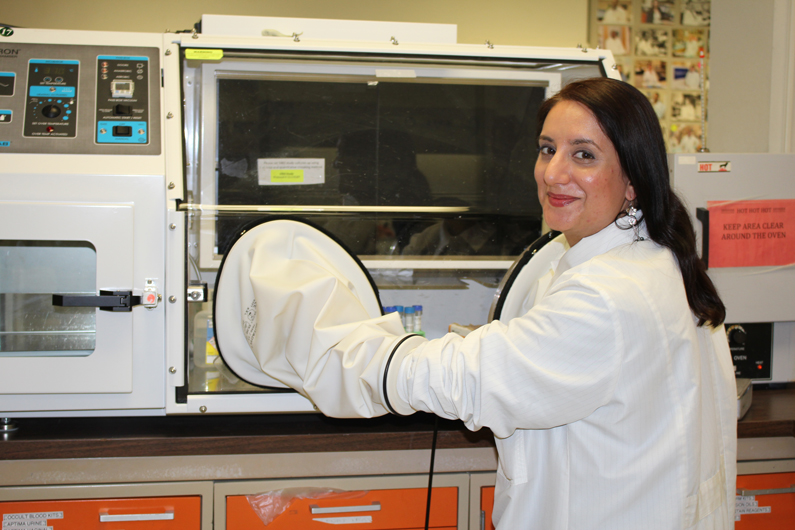
Char-Dell Edwards, a clinical laboratory scientist in the Microbiology Service of the Department of Laboratory Medicine, is processing a clinical specimen for microbiological testing during the night shift at the NIH Clinical Center.

Jessie Bhutani, a clinical laboratory scientist in the Microbiology Service of the Department of Laboratory Medicine, places cultured clinical specimens into an anaerobic chamber for growth of anaerobic bacteria during the night shift at the NIH Clinical Center.
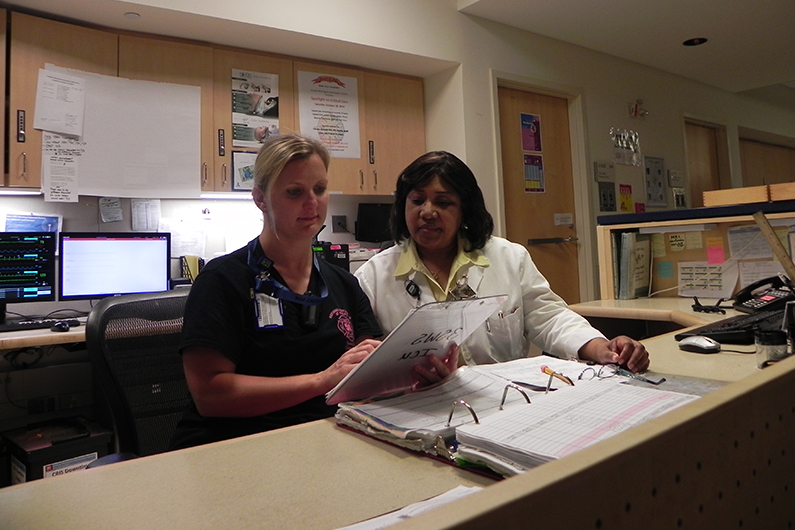
Carole Henry, an administrative coordinator, talks with Danelle Gori, a charge nurse, on the intensive care unit during the night shift at the NIH Clinical Center. Both are with the Nursing Department. Administrative coordinators, known as ACs, cover the hospital from 3 p.m. to 7 a.m., Monday through Friday, and all day on weekends and holidays. They make rounds on the nursing units, Pharmacy, Operating Room and recovery area, Interventional Radiology, Food services, etc. They work closely with the NIH Police and nursing units on any issues or concerns, locate physicians and report critical lab values as needed for outpatients.
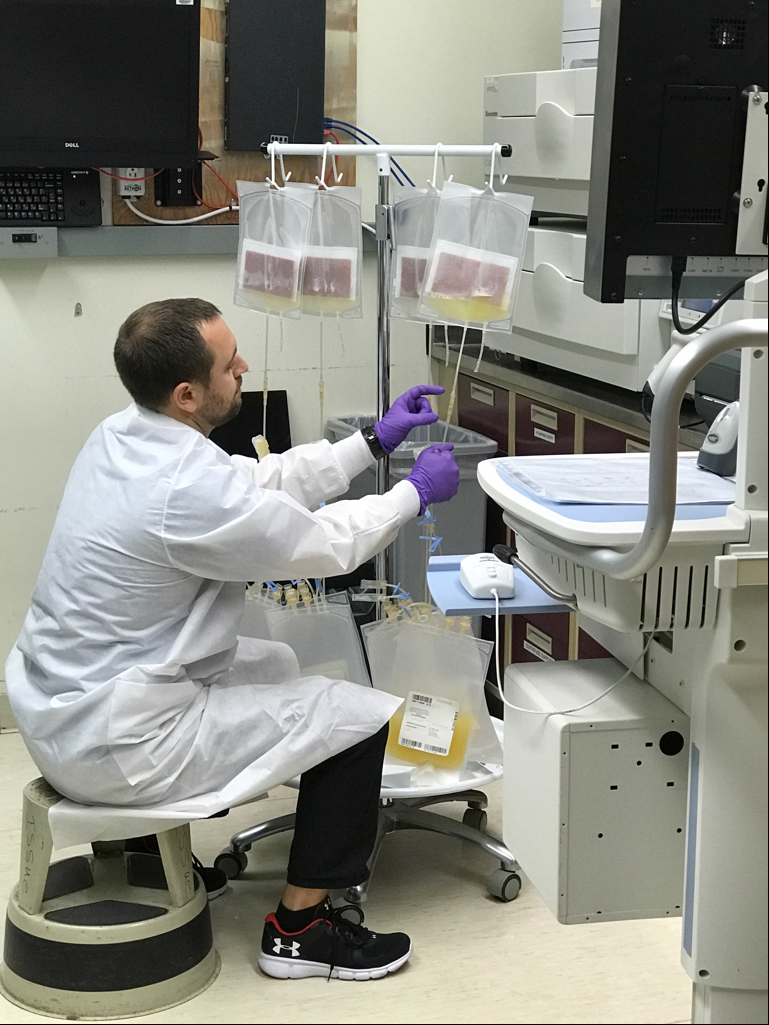
Max Tynuv, with the Department of Transfusion Medicine, separates the platelet component from the Intercept Blood System compound adsorption device, phase two of the pathogen reduction process, during the night shift at the NIH Clinical Center. This manufacturing process has time critical steps so delays in processing the afternoon collections impact the quality and usefulness of the components. In pathogen reduction, phase one or illumination, must occur within 24hr of collection. Pathogen reduction technology, in use at NIH since January 2016, is used for the preparation of pathogen-reduced apheresis platelet components in order to reduce the risk of transfusion-transmitted infection, including sepsis, and to reduce the risk of transfusion-associated graft versus host disease.
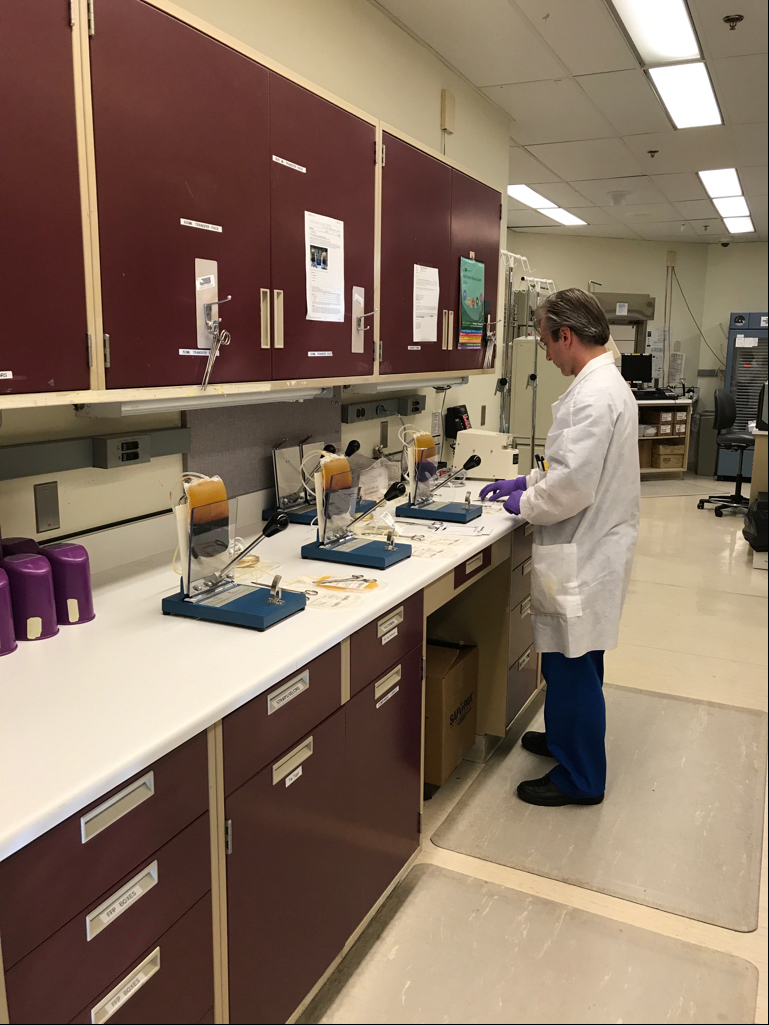
Nathan Marchiano, with the Department of Transfusion Medicine, is preparing to make several blood components — packed red blood cells, fresh frozen plasma and buffycoat — from a single unit of whole blood received from the DTM Donor Area, during the night shift at the NIH Clinical Center. This manufacturing processes has time critical steps so delays in processing the afternoon collections impact the quality and usefulness of the components. Blood components prepared from whole blood must be manufactured and stored within eight hours of the collection.

Donna Owolabi, (middle in white lab coat) an administrative coordinator with the Nursing Department, discusses staffing with night shift staff during the evening shift at the NIH Clinical Center. Administrative coordinators, known as ACs, cover the hospital from 3 p.m. to 7 a.m., Monday through Friday, and all day on weekends and holidays. They make rounds on the nursing units, Pharmacy, Operating Room and recovery area, Interventional Radiology, Food services, etc. They work closely with the NIH Police and nursing units on any issues or concerns, locate physicians and report critical lab values as needed for outpatients.
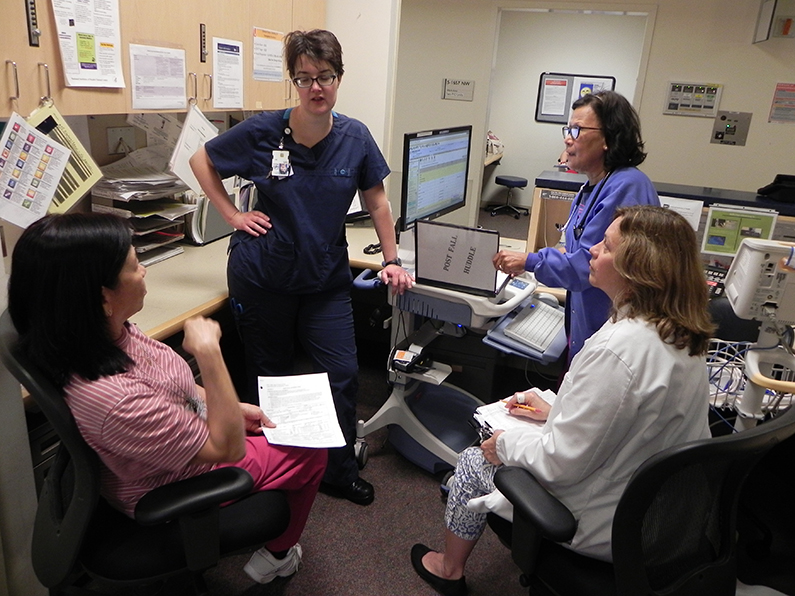
Sharon Osgood (far right in white lab coat), an administrative coordinator with the Nursing Department reviews the status of high acuity patients - extremely ill patients who could potentially go to the intensive care unit if their condition worsened, with staff members on the night shift at the NIH Clinical Center Oct. 7. Administrative coordinators, known as ACs, cover the hospital from 3 p.m. to 7 a.m., Monday through Friday, and all day on weekends and holidays. They make rounds on the nursing units, Pharmacy, Operating Room and recovery area, Interventional Radiology, Food services, etc. They work closely with the NIH Police and nursing units on any issues or concerns, locate physicians and report critical lab values as needed for outpatients.
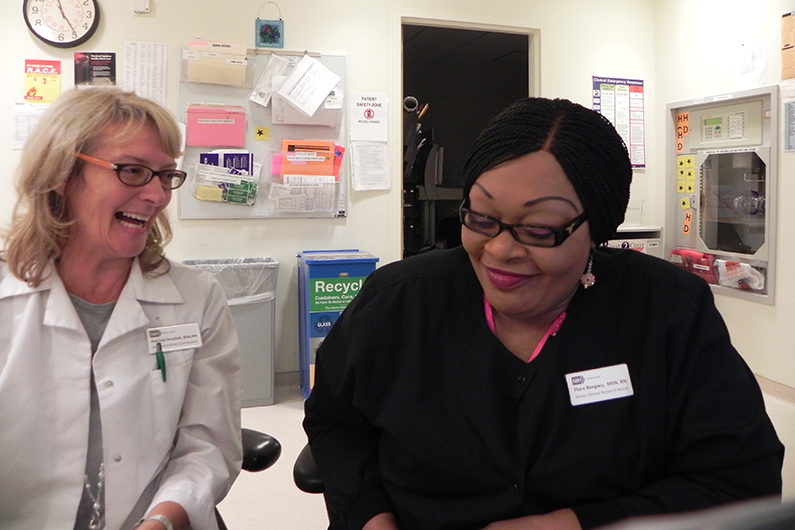
Patricia Smatlak, (left) an administrative coordinator with the Nursing Department, discusses staffing with a co-worker during a holiday shift at the NIH Clinical Center. Administrative coordinators, known as ACs, cover the hospital from 3 p.m. to 7 a.m., Monday through Friday, and all day on weekends and holidays. They make rounds on the nursing units, Pharmacy, Operating Room and recovery area, Interventional Radiology, Food services, etc. They work closely with the NIH Police and nursing units on any issues or concerns, locate physicians and report critical lab values as needed for outpatients.

Crystal Cavin, with the Nutrition Department, pours coffee for patients at the NIH Clinical Center. About nine to 12 Nutrition staff members work the night shift from 11:30 a.m. to 8:00 p.m. This small group of staff has the greatest number of trays to assemble and deliver in a short period of time, between 5 p.m. to 6:30 p.m., than any other meal time. Patients can also have an 8 p.m. snack delivered. And, upon request, Nutrition staff deliver floor supplies to nursing units and bag meals for after hours. Afterwards, Nutrition staff clean the dishware and set up the tray line for breakfast the next day.
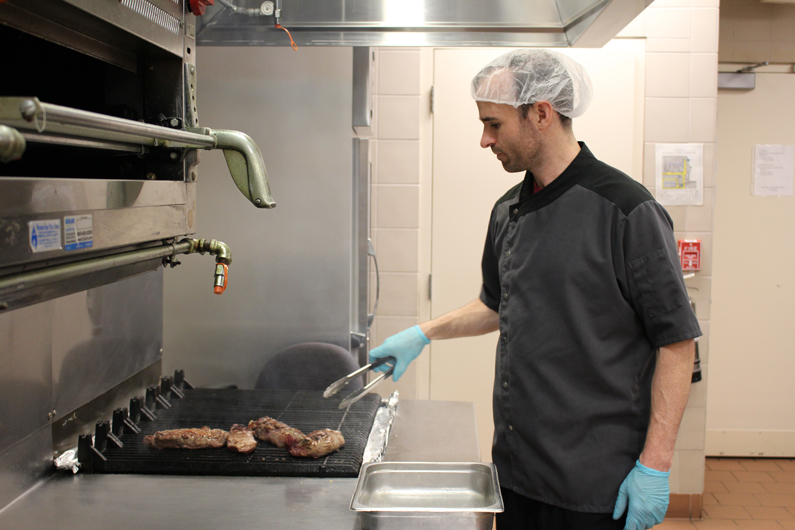
Jeff Tait, with the Nutrition Department, grills steaks for patients at the NIH Clinical Center. About nine to 12 Nutrition staff members work the night shift from 11:30 a.m. to 8:00 p.m. This small group of staff has the greatest number of trays to assemble and deliver in a short period of time, between 5 p.m. to 6:30 p.m., than any other meal time. Patients can also have an 8 p.m. snack delivered. And, upon request, Nutrition staff deliver floor supplies to nursing units and bag meals for after hours. Afterwards, Nutrition staff clean the dishware and set up the tray line for breakfast the next day.

